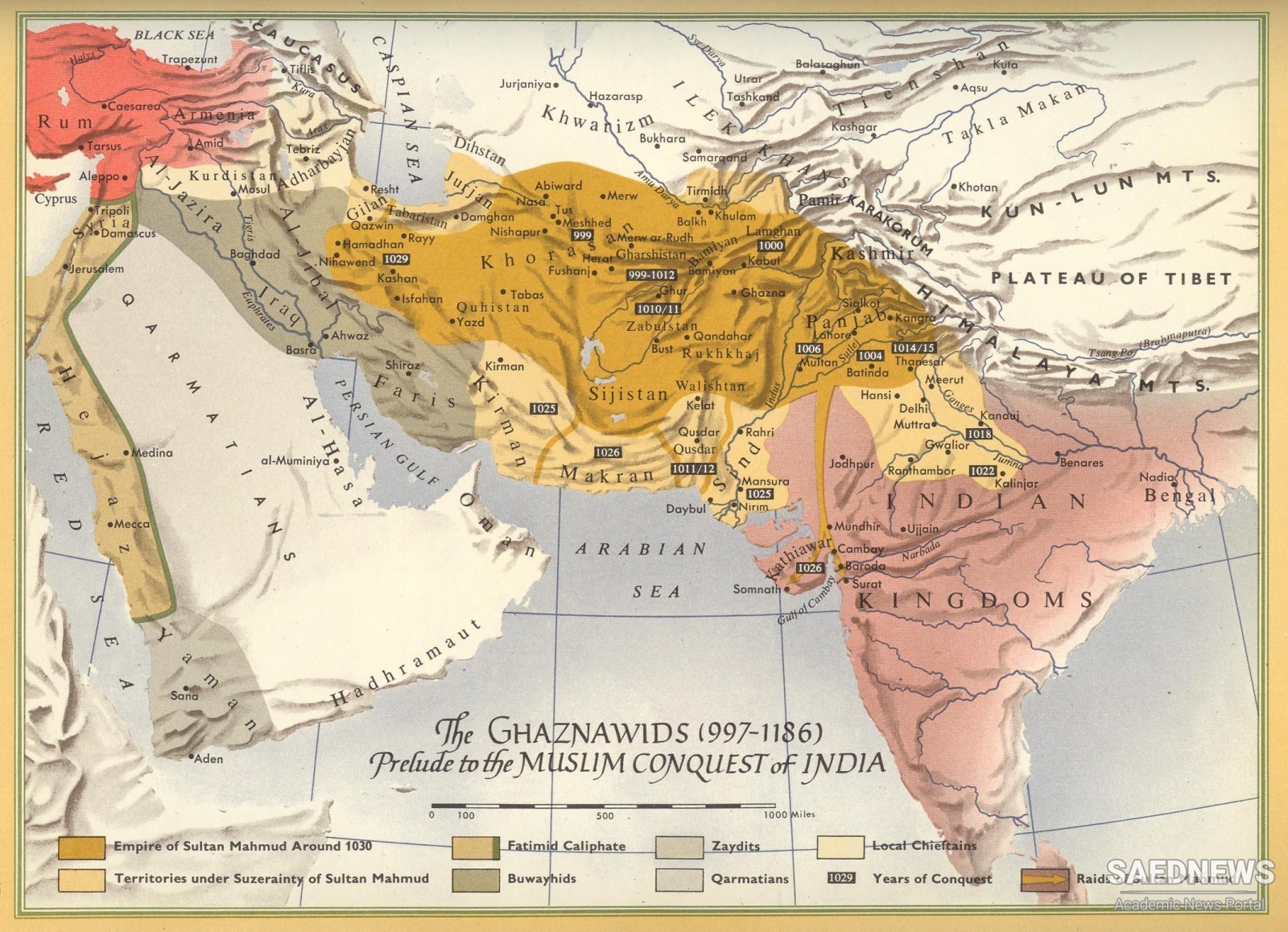The Samanids had been great patrons of both Arabic and Persian learning, and their court had nurtured such authors as Rudakl, Balami and Daqiqi, who had paved the way for the crowning achievement in the early Ghaznavid period of Firdausi of Tus, author of the Shahnameh or "Book of kings". Mahmud and Mas'ud both had traditional Islamic educations, and they were determined that their court too should be adorned by the greatest talents of the age. They attracted poets from neighbouring territories, so that amongst their poets, Farrukhl Slstani came to Ghazna from the service of the Muhtajid amir of Chaghaniyan, whilst Manuchihri Damghani came from the Ziyarid court in Gurgan and Tabaristan.
According to the later literary biographer Daulatshah, there were 400 poets in regular attendance at Mahmud's court, presided over by the laureate or amir al-shu'ard', 'Unsuri, who was himself continuously engaged in eulogizing his master and other court figures. 'Unsuri may have composed a metrical version of Mahmud's exploits, the Taj al-futuh or "Crown of conquests". Certainly, the divans or collections of verse which have survived from a few of these poets show freshness and attractiveness of expression. Mahmud also brought to Ghazna the great scholar, scientist and historian Abu Raihan al-Blrunl (362- c. 441I9-J3-C. 1050) from his native Khwarazm when that province was conquered by the sultan's army. Al-Birunl was therefore able to accompany the Ghaznavid raids into India. He learnt Sanskrit, and his contacts in India and his boundless intellectual curiosity about other faiths and customs enabled him to produce his magnum opus on India, the Tahqiq milal-Hind, the first Islamic work dispassionately to examine the beliefs and practices of the Hindus.
The actual court was organized on traditional Persian lines. The sultans were great builders, and constructed for themselves palaces and gardens in all the major towns of the empire. Masud personally designed and supervised the building of a fine new palace at Ghazna which took four years to complete, cost seven million dirhams and was erected by corvee labour. The surviving ruins at Lashkarl Bazar, extensively investigated in recent years by the French Archaeological Delegation in Afghanistan, give some idea of the monumental scale and opulence of these palaces. Their upkeep was doubtless a heavy charge on the populations of the towns in which they were situated. The sultans in their court sessions surrounded themselves with their slave guards, sat on a golden throne and engaged in prolonged drinking bouts with their nadims or boon-companions. They had their harem, with the inevitable eunuchs in attendance. Because of the hierarchical nature of court society, strict protocol was observed and the sultan was withdrawn from direct contact with the people. Some links with the masses were nevertheless kept up through the Islamic institution of sessions in which people could lay complaints of oppression or wrongdoing (mazalim) before the ruler.
A picture accordingly emerges of the sultans as typical Perso-Islamic rulers, in an environment very similar to other courts of the eastern Islamic world. In fact, a certain qualification should be made: we must always remember that the sultans were racially Turks, and only one or two generations removed from the Central Asian steppes; moreover, their power rested largely on their Turkish soldiery. The early sultans were still Turkish-speaking, and it was always necessary for the sultans to stay attuned to the needs and aspirations of their fellow-nationals. The exclusively Arabic and Persian nature of the sources for the period leaves us only to guess at the extent and influence of this Turkish element in early Ghaznavid life and culture, but this must have been significant; the Persian court poet Manuchihri was familiar with Turkish poetry, this being presumably of a popular nature.


 The Early Ghaznavids in Medieval Persia
The Early Ghaznavids in Medieval Persia














































